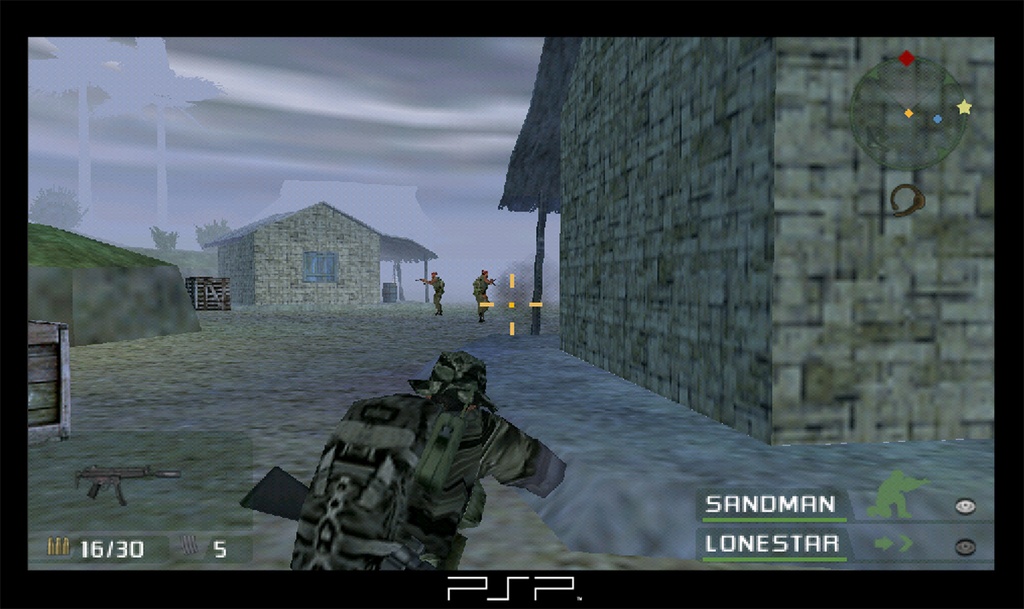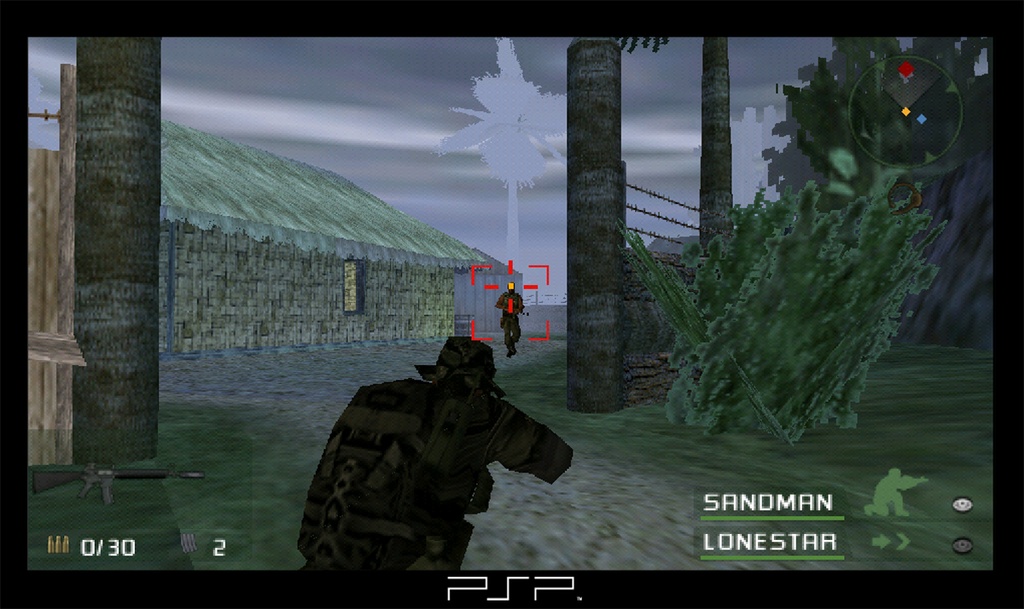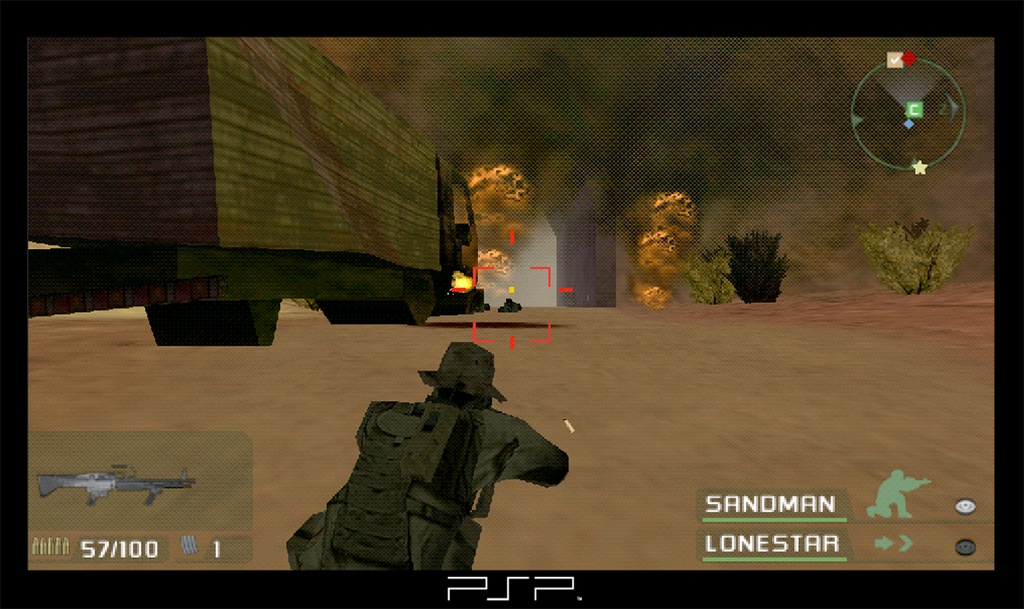SOCOM: U.S. Navy SEALs Fireteam Bravo Updated Hands-On
Zipper stops by to give us an updated look at its PSP SOCOM title.
Sony has built itself a nice little roster of key franchises over the years for its console hardware, so it's not a shock that as time goes on, more of those franchises seem primed for appearances on the company's portable platform, the PlayStation Portable. In just a few weeks, Sony and developer Zipper Interactive's highly acclaimed tactical shooter series, SOCOM, will debut on the PSP in the form of SOCOM: U.S. Navy SEALs Fireteam Bravo. Yes, the title is a mouthful, but the game itself has been pared down from its console brethren--but not so much that it loses its playability in translation. For all that has changed in this portable shooter, many of the series' trademark features are still intact, such as the variety of mission types and online multiplayer components. We recently had our first opportunity to sit down and examine Fireteam Bravo since the Electronic Entertainment Expo, and it's safe to say that the game has come a long way since then.

Fireteam Bravo will follow the same timeline as the most recent PS2 SOCOM game, SOCOM 3: U.S. Navy SEALs. The basic scenarios from that game will be included, as well as a brand-new scenario set in Chile. In the single-player portion of the game, you'll have 14 missions to play through, such as recon assignments, hostage rescues, demolition missions, and stealth scenarios. Many of the key features from the console SOCOM games are present here as well. For example, you can still customize your weapons prior to a mission by attaching scopes, suppressors, and other forms of gadgetry. On the flip side, a few features are also missing. For instance, the encumbrance feature from SOCOM 3, which slowed down your controlled character as he took on more equipment, is absent here.
Fireteam Bravo seems to be a simpler, but not necessarily less challenging, piece of work. The gameplay has changed significantly to accommodate the controls of the PSP. Because the PSP has fewer buttons and analog sticks than most game consoles, some compromises had to be made. As a result, you will use the analog stick of the PSP to move your character from side to side and forward and backward, and the camera will stay fixed behind you. You will be able to free-look with the camera, however, but it isn't the sort of thing you can do freely at any time.

So how do you target and shoot enemies? By pressing the right trigger button, you'll autotarget a nearby enemy, and the left trigger button will let you cycle through enemies. Designing a tactical shooter that relies heavily on an autotargeting system is a dicey proposition, especially in multiplayer situations. Thankfully, this system seems to work in a pretty balanced fashion. Autotargeting does not necessarily equate to hitting your target with any measure of precision. It all depends on what kind of weapon you're using and where you are. If you're standing still at a distance, a rifle will be more accurate, although you're also far more open to getting blown up. When you're moving around and at shorter distances from your enemies, automatic weapons are most definitely your friends, although you'll never be quite as accurate as you would be prone with the rifle. It's a balancing act, and it's one that ought to require skill on your part to be successful.
Still, Fireteam Bravo isn't aiming itself toward the hardcore audience that the PS2 games have enjoyed. For a portable game, the ability to easily pick up and play it is required, and for that, Fireteam Bravo includes an instant-action feature--a way to play any mission type at any time. Here you can do hostage extractions, stealthy hostage extractions (where you absolutely, positively cannot be discovered), sweep and clear missions, sabotages, and stealth sabotages (again, you can't be discovered). Interestingly, enemy and item placement during instant-action stages is always randomly generated, so you won't be able to succeed simply by memorizing where all the guards are.

If you are a hardcore SOCOM player, don't worry, you won't be left out in the cold as far as content goes. Fireteam Bravo features unlockable content that directly ties in with SOCOM 3. These are called cross-talk objectives. Cross-talk objectives exist in both SOCOM 3 and Fireteam Bravo. They can range from picking up a single piece of intel, to blowing up something of significance within a given area. Depending on which game you completed an objective in, once you sync the data, you'll find something new or unlocked in the other game. Many of these cross-talk objectives will be mission-specific, but you can also unlock bonus items like character skins and weapons this way.
Hardcore fans will also be pleased to hear that Fireteam Bravo supports 16-player online multiplayer sessions in both ad hoc and infrastructure modes. Suppression, demolition, hostage rescue, free-for-all (or deathmatch), and captive modes are all available. Incidentally, experienced SOCOM players might notice that the maps in multiplayer aren't especially big--at least not in comparison to SOCOM 3's larger-scale maps. This was intentionally done so that games not featuring the full complement of players would still be enjoyable. There is nothing worse than being unable to find other people to shoot at in a multiplayer shooter. We briefly got to sit down and play the infrastructure multiplayer mode against a team of Zipper testers, and we found the online play to be quite smooth. We hope that the final retail product retains this level of playability.

Graphically, Fireteam Bravo retains much of the look of the PS2 SOCOM games. The player models seem quite detailed, and characters move and animate about as realistically as they ever did on the PS2. Where you'll notice shortcuts here and there will be in the environments. Textures are lower in resolution, and there appears to be more in the way of open space and less focus on lots of scene decoration. You also might notice fewer enemies in some places. By PSP standards, the game seems to be coming together excellently from a visual standpoint. We rarely saw the frame rate hitch up, and the overall design screamed SOCOM, which we'll hardly complain about.
All told, we're very much looking forward to Fireteam Bravo's release. The game is aiming to retain what makes SOCOM fun while being geared toward portable audiences, and that's just what it appears to do. We'll need a more in-depth look at features such as the targeting system and the multiplayer before we can deliver the final word on the game, so look for our full review closer to the game's release on November 8.
Got a news tip or want to contact us directly? Email news@gamespot.com
Join the conversation